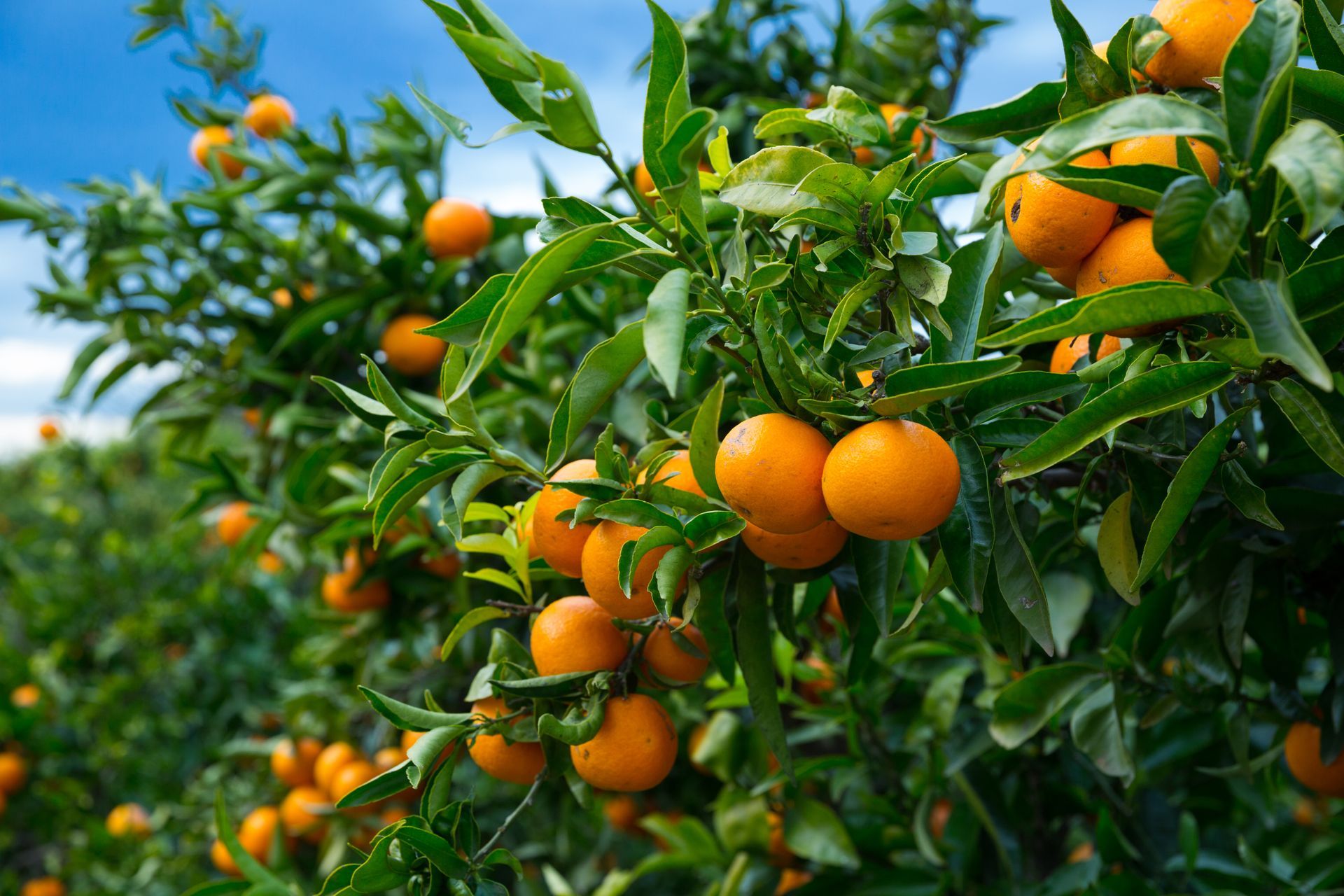Mandarin Tree: The Ultimate Care Guide

The true value of the mandarin tree lies in its fruit. With their sweet, vibrant flavor, mandarin oranges are a favorite in countless dishes and snacks. Packed with nutrients, they can be enjoyed fresh, dried, canned, or juiced.
Want to grow your own mandarin oranges? Proper care is key. Read on to learn everything you need to know about nurturing mandarin trees so you can harvest your own delicious fruit in the years to come.
Fast Facts for Mandarin Trees
| Common Name | Mandarin orange tree |
|---|---|
| Scientific Name | Citrus reticulata |
| Month(s) of Harvest | October to December |
| Light | Require at least six hours of direct sunlight daily since the plants prefer mild winters and hot summers |
| Water | Require deep watering every week since frequent light watering isn't as effective |
| Soil | Need a garden-grade soil mix with good drainage and without fertilizer or wetting agents |
| Fertilizer | Require an annual application of a slow-release fertilizer in early spring. Using a fertilizer specifically made for citrus trees is advised, but one with a 12-6-6 NPK ratio also works well |
| Pests | Susceptible to attack by thrips, scale insects, whiteflies, mealybugs, aphids, and sooty mold |
| Diseases | Affected by Armillaria root rot, Bacterial blast, Citrus nematode, Dothiorella blight, Phytophthora gummosis, and Phytophthora root rot |
| Growing Zone | Zone 9 to 11 |
Table of Contents
Credit:
Everything You Need to Know to Take Care of Mandarin Trees
Growing mandarin oranges takes great patience but can be extremely rewarding. Here's what you need to know about mandarin orange tree care.
Planting
The right time to plant mandarin trees is early autumn or spring. Soil temperatures rise but don't get too high in spring. Plus, there's residual moisture in the soil from winter rains. Autumn is also a good time since trees have time to establish before cold winter temperatures arrive.
Ideally, you should plant mandarin orange trees when the frost danger has passed. That's around mid to late March in the northern hemisphere. Plant your tree in an open area where it gets over five hours of direct sunlight every day.
Since they are small in size, ranging up to 25 feet, mandarin trees make good potted plants. However, make sure you plant them in a container with wheels, allowing you to move the tree outdoors in summer or when it outgrows the pot.
Mandarin trees aren't your typical landscape tree like a rose tree or a magnolia tree so if you are looking for aesthetics, while they are beautiful, a mandarin tree might not be the best to plant.
Care
Caring for mandarin trees involves providing them with the right sun, water, soil, and fertilizer. Follow these instructions to grow a healthy tree.
Sun and Temperature
Most mandarin trees prefer a temperature range between 60- and 90 degrees F. Some cultivars are more cold-tolerant.
Both freezing temperatures and too much sun are harmful to the plant. Maintain a balance by ensuring your tree gets six hours of direct light and partial sun during the rest of the day. Do not plant mandarin trees if the temperature goes below 25 degrees F.
Water and Humidity
Since mandarins have a high water content - up to 86% - they require relative humidity for proper growth, which is around 85% to 90%.
As for watering, do it twice a week when your tree is in its vegetative state. As it develops new growth, let the tree dry out before you water it. Deep water mandarin trees every week or every two weeks for best results. You can invest in a drip irrigation system or soaker hose to prevent wetting the tree trunk.
Potted plants need more frequent watering. Saturate them with water to keep the soil moist. Let the soil surface dry before the next watering.
If your mandarin tree is fruiting, reduce the frequency of watering, as it helps increase the sugar content in the fruit. Also, do not water frequently during the rainy season.
Soil
Mandarin trees can thrive in various types of soils, but they should have good drainage. It also helps if the soil has a high organic matter. Or you can add manure or compost to increase the native soil's fertility.
The soil pH should be between 5.5 and 6.2. If the soil in your yard has poor drainage, get a commercial soil mix or plant the tree in a raised bed. Add soil amendments like compost, potting mix, or peat moss to improve the soil's quality.
Fertilizing
There are many citrus-specific fertilizers available in the market. The amount of fertilizer you need to apply will depend on the type and concentration of the fertilizer blend. If you're using a slow-release blend, apply it once a year.
Fertilize mandarin orange trees from March to August, as they grow actively during this time. If you cannot find a citrus tree fertilizer, get any fertilizer with a 12-6-6 ratio. It has double the amount of nitrogen compared to phosphorus and potassium. Opt for fertilizers that also have micronutrients like copper, iron, zinc, and magnesium.
Pruning
Since mandarin trees do not lose their leaves in autumn, you can prune suckers, diseased branches, and dead limbs anytime during the year.
Do major pruning between February and April. If you need to open up the tree's canopy, remove overlapping branches. Also, remove damaged or dead fruit from the tree.
Propagation
You can propagate mandarin trees through:
- Seed propagation
- Rooted cuttings
- Grafting
However, make sure your local regulations allow for mandarin tree propagation since some areas have restrictions on propagating citrus that don't originate from clean stock programs.
Opt for grafting if you want to produce a tree resilient to common diseases. Some popular rootstocks for mandarin trees include Flying Dragon and Carrizo. Wait for the rootstock to be thick enough before grafting it through chip budding.
If you want to use the root-cutting method, ensure the cuttings have 2 to 5 nodes or leaves. Keep the root cuttings in a high-humidity environment to promote root formation. Do not plant trees propagated through root cuttings into the ground. They thrive better as container plants since pots protect them from root diseases and frost.
Did You Know? The term 'Mandarin' comes from the title of counselors in Chinese courts, as they wore bright orange robes.
Harvesting and Storing
Harvesting mandarin fruits the right way is key to ensuring a sweet taste and undamaged fruits. Keep the following tips in mind.
Harvesting
If the fruit is still dark green, it's not time for harvesting yet. Harvest mandarin oranges when they are fully orange. You can pluck an orange from the tree and taste it to determine if it's ready to harvest.
If the fruit tastes sour, it needs more time to mature. Mandarins should have a sweet taste when fully ripe.
Do not pull the fruit off the tree when harvesting. Instead, twist it at an angle or use clippers to cut the fruit off. Wash the mandarins before you store or eat them.
Storing
You can store mandarin oranges for about a week at room temperature or two weeks in the fridge. You might wonder how store-bought fruits can last so long. They have a wax coating, which helps preserve their texture and taste while extending their shelf life.
The typical orange you grow at home will not have this coating. So, it will lose moisture with time.
If you want to store mandarins for a long time, do the following:
- Freezing: Frozen oranges are a great option for making smoothies. You can also thaw them later to add in salads.
- Dehydration: Many people add dehydration mandarins to tea, desserts, and cocktails for added flavor. Or you can use the peel as an accessory for a garland.
- Canning: While this takes more effort, it's a great way to preserve mandarins for over a year.
Common Issues With Mandarin Trees
Unfortunately, the sweet orange you so lovingly grow could be affected by certain diseases and pests. Here are some to look out for.
Growing Problems
Apart from pests and diseases, here are some common growing problems you should know about:
- Not Enough Sun: When grown indoors, mandarin plants often don't get enough sunlight. These plants do not fruit. You should move the plants outdoors in summer.
- Stress: Plants that experience stress due to lack of water or freezing temperatures may also not grow properly.
- Environmental Variations: If your region experiences an abnormally warm winter or gets too much water, it can result in lower fruit quality.
The key is to grow your plant in a well-draining potting mix, keep it in an adequate temperature range, ensure full sun exposure, and protect it from environmental stress.
Pests
Mandarin orange trees are susceptible to attack by many kinds of pests, especially chewing insects and aphids.
Chewing Insects: Citrus leafminer (Phyllocnistis citrella) is a small moth that infests young foliage in mandarin trees in early autumn. It affects the leaves of trees under three years old.
Meanwhile, the light brown apple moth (Epiphyas postvittana) is about 20 mm long and chews on leaves and fruits. You can control these pests chemically with a mixture of pyrethrins, chili, and garlic or a low-toxicity pesticide from your local nursery.
Aphids: Aphids (Toxoptera aurantii) are small insects that feed on the sap of mandarin trees and can weaken them if left unchecked. These small-bodied black insects affect the mandarin tree leaves, curling them over time.
Diseases
Fungal diseases, such as anthracnose (Colletotrichum gloeosporioides), also affect mandarin trees, resulting in the following symptoms:
- Premature leaf drop
- Twig dieback
- Dark fruit staining
- Spores on leaves and twig
Similarly, Armillaria root rot (Armillaria mellea) causes the tree to wilt and decline slowly. It makes the leaves chlorotic, yellowish, and small. Controlling the disease is hard once it has spread significantly. Remove the branches or trees that show signs of infection.
Black root rot (Thielaviopsis basicola) is another fungal disease of mandarin trees. It has the following symptoms:
- Brown-black lesions on the roots
- Sloughed off root cortex
- Chlorotic leaves
Since there isn't much you can do for disease management, prevention is key. Plant your mandarin orange trees in good-quality potting soil and avoid overwatering them.
Credit:
Sweet New Earth's Final Word On Mandarin Trees
That's it! That's all you need to know about Mandarin trees. Mandarin trees are one of the best fruit trees to grow because if you do it right, you get a delicious reward for all your hard work. That's one of the reasons why we love growing fruit trees so much because unlike regular trees (which are mainly for aesthetics), you can actually harvest something from fruit trees. Some people even consider them to be one of the best front yard trees. However, we have never had a Mandarin tree out front. To each his own!
FAQs

Christina Hernandez
Christina has done most of her research on environmental science but recently has changed her focus towards sustainable forestry. She has a passion for the outdoors and wants to spread that passion to the world.
Join our community!
Join to receive guides, insights, and the latest gardening deals!
